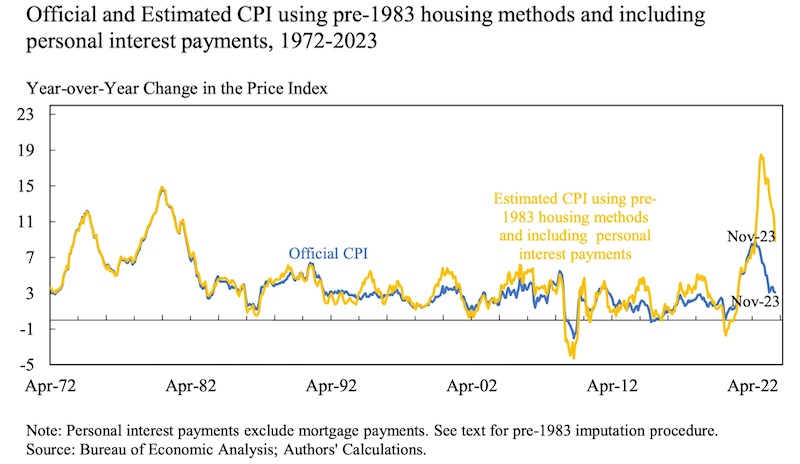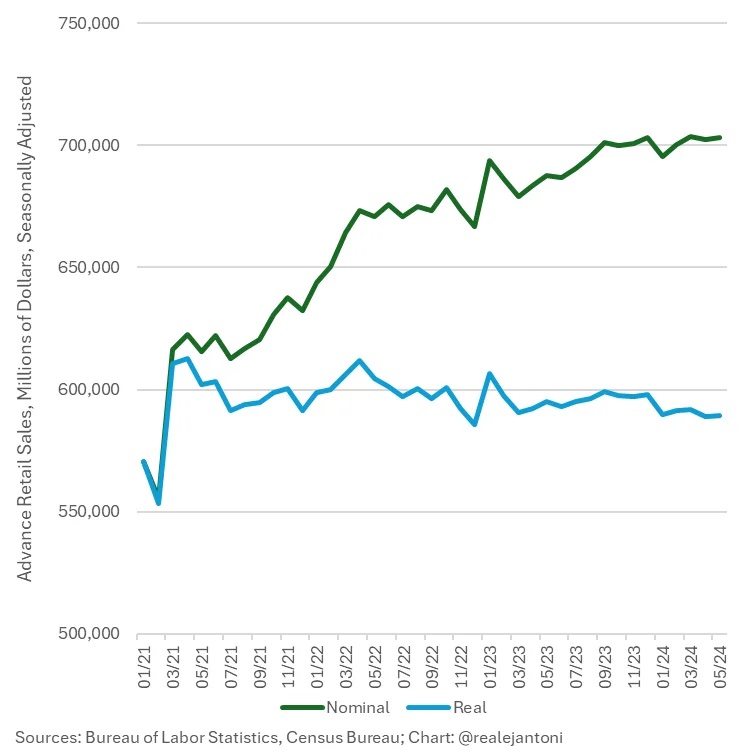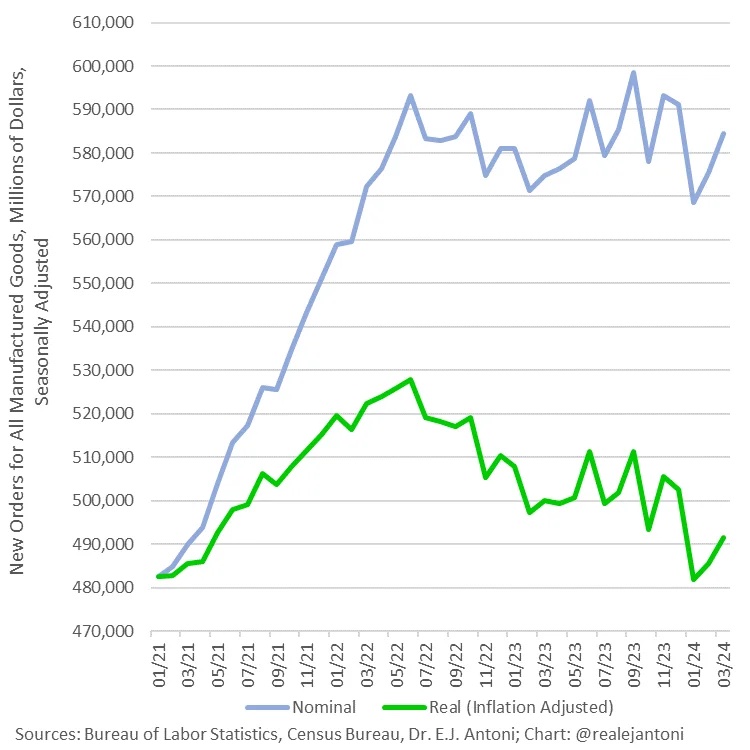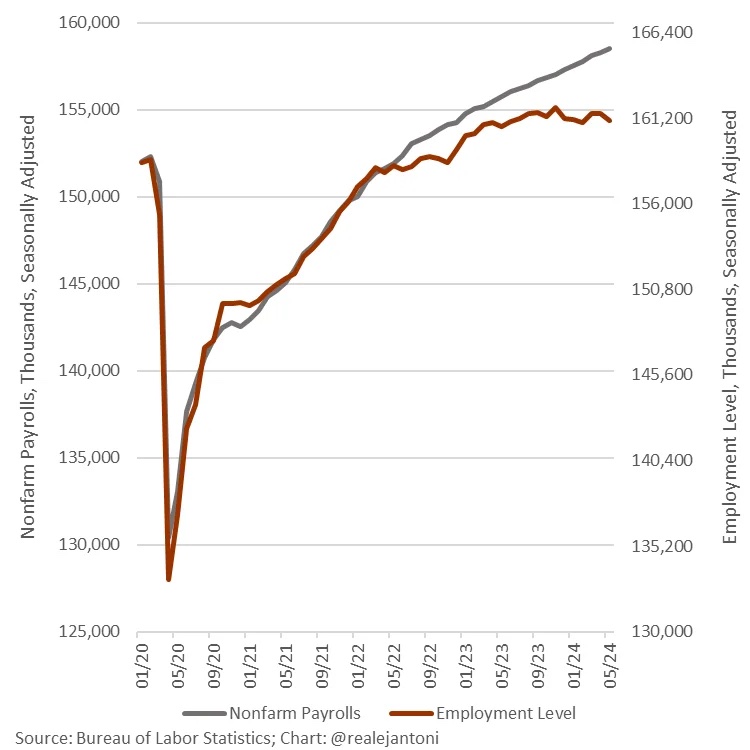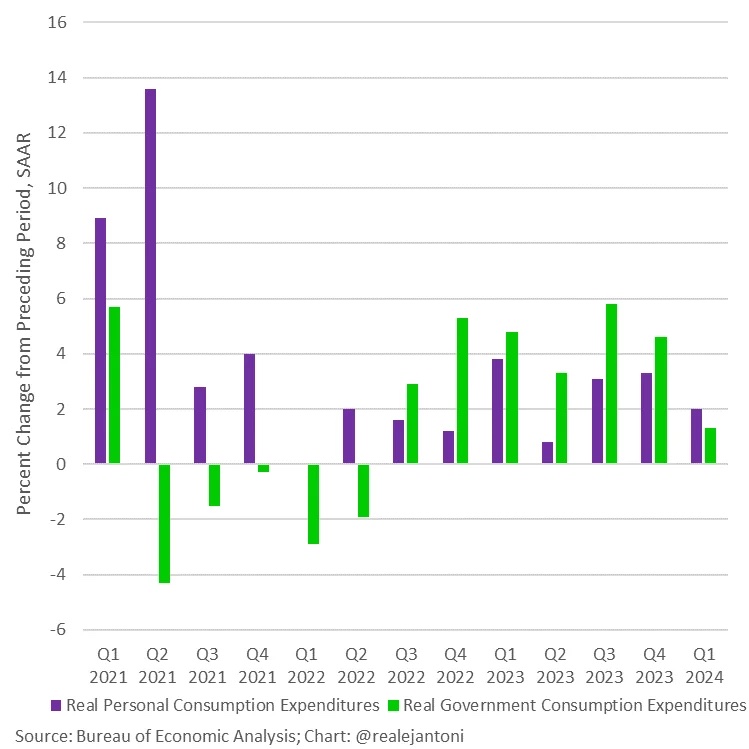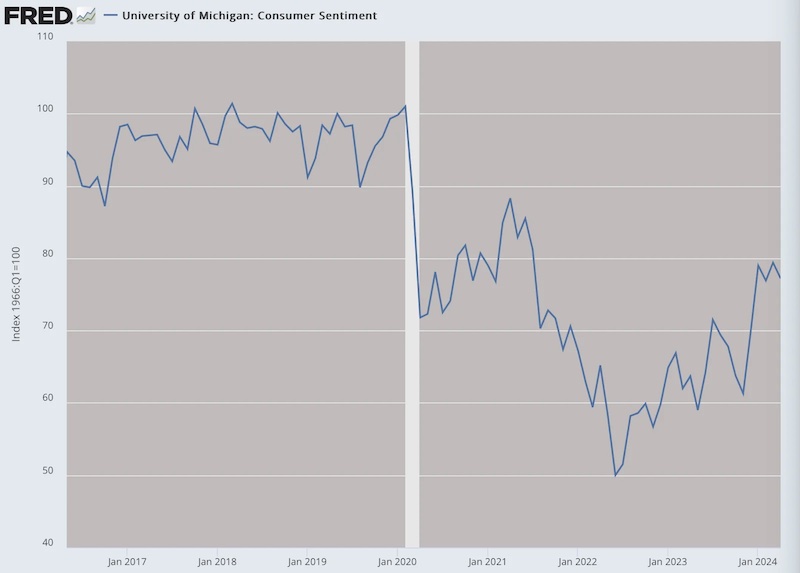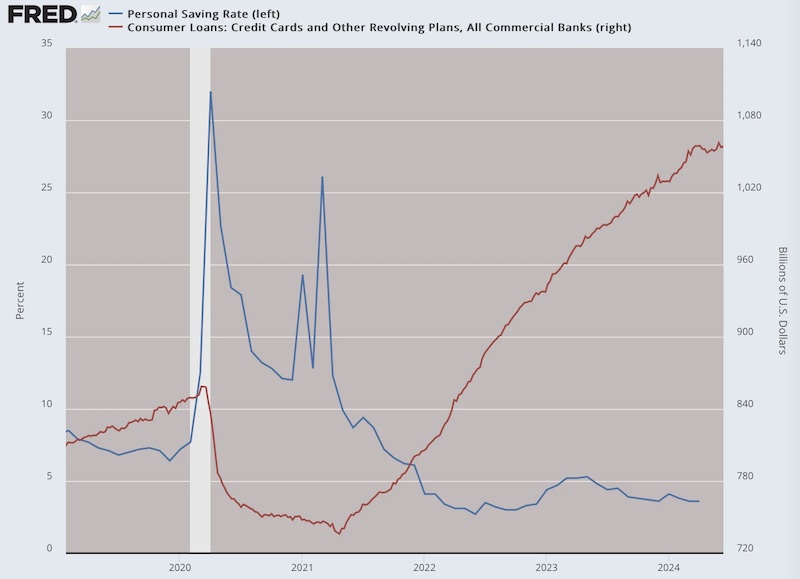Day: June 25, 2024
NPR News: 06-25-2024 8PM EDT
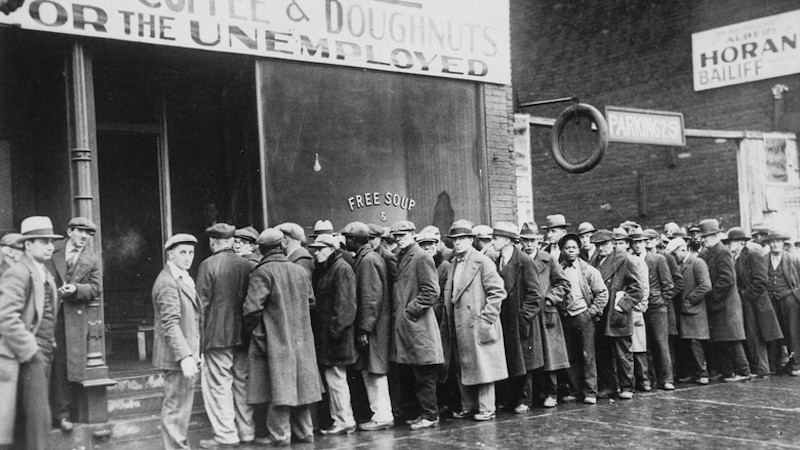
There was an oblique message buried in a;New York Times;story;on the growing crisis in commercial real estate in cities. Yes, this is exactly the kind of article that people pass over because it seems like it doesn’t have broad application. In fact, it does. It affects the core of issues like our city skylines, how we think about urbanism and progress, where we vacation and work, and whether the big cities are drivers or drains on national productivity.;
The note mentions the “broader distress brewing in the commercial real estate market, which is hurting from the twin punches of high interest rates, which make it harder to refinance loans, and low occupancy rates for office buildings — an outcome of the pandemic.”
We are used to this kind of language blaming the pandemic for the results of lockdowns. Of course, it was a man-made decision to turn a respiratory virus into an excuse to shut down the world. The lockdowns blew up all economic data, generating seesawing graphs on every indicator never seen in industrial history. They also made before/after comparison extremely difficult.;
The consequences will echo long into the future. The high interest rates are a result of trying to slow down the money spigot unleashed in March 2020, in which more than $6 trillion in new cash appeared out of nowhere and was distributed as if by helicopter.;
What did the money injection do? It generated inflation. How much? Sadly, we do not know. The Bureau of Labor Statistics simply cannot keep up, partially because the Consumer Price Index does not calculate the following: interest on anything, taxes, housing, health insurance (accurately), homeowners insurance, car insurance, government services like public schools, shrinkflation, quality declines, substitutions due to price, or additional service fees.;
That’s a major part of what has gone up, which is why data on particular industries shows a huge gap (groceries up 35% over four years) and why ShadowStats estimates inflation in double digits two years running, having peaked at 17%. Just adding in interest, a paper from NBER estimates, takes 2023 inflation to 19%.
Various studies;have shown that since 2019 fast food prices — a gold standard in financial markets for measuring true inflation — have outpaced official CPI by between 25% and 50%.
Getting the inflation data wrong is only the start of the problem. We are lucky if any government data even adjusts for the wrong numbers. Consider retail sales as just one example. Let’s say you bought a hamburger last year for $10 and you bought one this week for $15. Would you say that your retail spending is up 50%? No, you just spent more on the same thing. Well, guess what? All retail sales are calculated this way.;
It’s the same with factory orders. You have to do the inflation adjustments yourself. Even using conventional data, which are wildly underestimated, wipes out all gains of the last several years. EJ Antoni is one of the few economists actually keeping up with this stuff, and he produces the following two charts.
As EJ writes: “This is factory orders before and after adjusting for inflation: what looks like a 21.1% increase from Jan ’21 to Mar ’24 is only a 1.8% increase – the rest is just higher prices, not more physical stuff; worse yet, real orders are down 6.9% since their highwater mark in June ’22.”
Imagine the same charts but with more realistic adjustments. Are you getting the picture? The mainstream data being dished out daily by the business press is fake. And imagine the same charts above redone with inflation in the double digits as it should be. We’ve got a serious problem.;
The problems with the employment data are getting to be more well-known. Essentially, the establishment data that is normally reported is double-counting or just plain inaccurate, and there is a huge divergence with the other method of counting jobs via household surveys. EJ again offers this look.
In addition, neither worker/population ratios nor the labor participation rate are back to pre-lockdown levels.;
Now consider GDP. In the old formula hammered out in the 1930s, government spending adds to the GDP while cuts subtract from it, just as exports add and imports subtract. Why? It’s an old theory rooted in a kind of Keynesian/mercantilism that no one seems ever to change. But the bias is profound these days with explosive government spending.
To calculate whether and to what extent we are in recession, we look not at nominal GDP but real GDP; that is, adjusted for inflation. Two down quarters are considered recessionary. What if we adjust pathetic and seriously mis-estimated output numbers by a realistic understanding of inflation over the last few years?;
We don’t have the numbers but a back-of-the-envelope suggests that we never left the recession of March 2020 and that everything has been getting gradually worse.;
That appears to fit with every single consumer sentiment survey. It seems likely that people themselves are better observers of reality than government data collectors and statisticians.
So far, we’ve dealt briefly with inflation, output, sales, and output, and find that none of the official data is reliable. One mistake bleeds to others, such as adjusting output for inflation or adjusting sales for increased prices. The jobs data is particularly problematic because of the problem of double-counting.;
What to know about household finance? The flipping of savings rates and credit card debt tell the story.
When you add it all up, you get a strange sense that nothing we are being told is real. According to official data, the dollar has lost about 23 cents in purchasing power over the last four years. Absolutely no one believes this. Depending on what you actually spend money on, the real answer is closer to 35 cents or 50 cents or even 75 cents…or more. We do not know what we cannot know.;
We are left to speculate. And this problem is combined with the reality that this is not just a US problem. The increase in inflation and the decline in output is truly global. We might call this an inflationary recession or high inflationary depression, all over the world.;;
Consider that most economic models used through the 1970s, and still today, postulate that there is a forever tradeoff between output (with employment as a proxy) and inflation, such that when one is up, the other is down (Phillips curve).;
Now we face a situation where the jobs data are profoundly affected by bad surveys and labor dropouts, output data is distorted by history-making levels of government spending and debt, and no one is even trying anymore to provide a realistic accounting of inflation.;
What the heck is really going on? We live in data-obsessed times with seemingly magical abilities to know and calculate everything. And yet even now, we seem to be more blind than ever before. The difference is that nowadays, we are supposed to trust and rely on data that no one even believes is real.;
Going back to that commercial real estate crisis, for the;New York Times;story, the large banks would not even talk to the reporters doing the story. That should tell you something.;
We live with a don’t-ask-don’t-tell economy. No one wants to say hyperinflation. No one wants to say economic depression. Above all else, never admit the truth: the turning point in our lives and the precipitating event to the whole calamity for the world were the lockdowns themselves. All else follows.
About the authors:
- Peter St Onge is an economist, a Fellow at the Mises Institute, and a former MBA professor.
- Jeffrey A. Tucker is Founder, Author, and President at Brownstone Institute. He is also Senior Economics Columnist for Epoch Times, author of 10 books, including Life After Lockdown, and many thousands of articles in the scholarly and popular press. He speaks widely on topics of economics, technology, social philosophy, and culture.
Source: This article was published at Brownstown Foundation
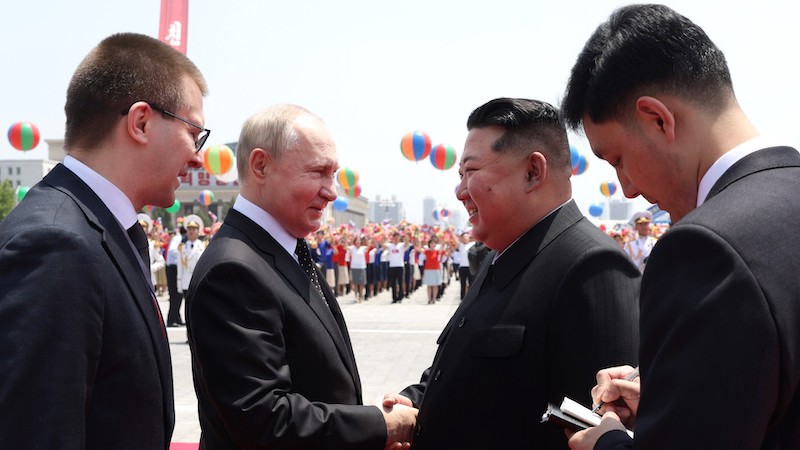
By He Jun
On June 19, Russian President Vladimir Putin arrived in Pyongyang for a two-day visit to North Korea. Following this, Putin is also scheduled to visit Vietnam. In the wake of the Russia-Ukraine war, the West has imposed joint sanctions aimed at isolating Russia, severely impacting its geopolitical and geo-economic space. Against this backdrop, Putin’s visit to China in May, his current visit to North Korea, and the upcoming visit to Vietnam are all aimed at expanding Russia’s geopolitical and geo-economic influence.
Based on public reports, it appears that Putin’s visit to North Korea has achieved a series of results. The most significant among them is the signing of the “comprehensive strategic partnership” treaty between Russian President Putin and North Korean leader Kim Jong Un.
During the talks with Kim Jong Un, Putin stated that Russia is fighting against the “hegemonic, imperialist policies” of the United States and its allies over decades. He said that Russia appreciates North Korea’s “consistent and unwavering support for Russian policy, including in the Ukrainian direction”. Putin also added that Russia has prepared “a new basic document for the establishment of long-term relations with North Korea”. Meanwhile, Kim Jong Un remarked that in a complex and rapidly changing world, North Korea is strengthening its strategic communication with Russia and its leadership. He affirmed that North Korea will “unconditionally support all of Russia’s policies”.
Putin emphasized the importance of the treaty signed between the two countries, stating that this document will serve as the foundation for further development in the bilateral relationship. He stated that “the comprehensive partnership agreement signed today provides, among other things, for mutual assistance in the event of aggression against one of the parties to this agreement”. Putin also hinted at the possibility of military technology cooperation with North Korea. Kim Jong Un, commenting on the signing of the treaty between North Korea and Russia, remarked that the agreement accelerates the construction of a new multipolar world and that the relations between North Korea and Russia have been elevated to the level of an alliance.
This points to the indications that while the relationship between Russia and North Korea has not yet reached a true military alliance, it is close enough to be one. In today’s world system, both Russia and North Korea face multiple sanctions from the U.S. and its Western allies. Enhancing bilateral relations between Russia and North Korea allows them to provide each other with geopolitical space and expand cooperation in economic, technological, and military aspects. If Russia were to provide military technology to North Korea, it would undoubtedly conflict with United Nations sanctions, not to mention those imposed by the U.S. However, against the backdrop of Russia’s confrontation with the West, such actions may not face significant additional repercussions.
It is noteworthy that Putin’s visit to North Korea this time could potentially have a significant impact on the geopolitical landscape of Northeast Asia, particularly through possible military cooperation. Putin has already stated that he does not rule out military technology cooperation with North Korea.
South Korea has previously stated that from August 2023 to February 2024, North Korea shipped a total of 6,700 containers of weapons and ammunition to Russia. Ukraine has alleged that Russia launched KN-23/24 series missiles manufactured by North Korea. The Center for Strategic and International Studies (CSIS) also released a report claiming that North Korea transferred a large amount of military hardware to Russia. However, both Russia and North Korea have denied these claims, dismissing them as “absurd”.
If North Korea has indeed risked the ire of the West by supplying military equipment to Russia, what would Russia provide in return? From North Korea’s needs and geopolitical logic, Russia has numerous military cooperation options — advanced military aircraft, missile technology, and most worryingly, nuclear technology, all of which are potential concerns for the West. According to reports, on June 14 this year, U.S. Deputy Secretary of State Kurt Campbell expressed in an urgent phone call with South Korean First Vice Foreign Minister Kim Hong-kyun that the U.S. had information on what Pyongyang has provided to Moscow but was uncertain about what North Korea received in return from Russia. “Hard currency? Is it energy? Is it capabilities that allow them to advance their nuclear or missile products? We don’t know. But we’re concerned by that and watching carefully”, Campbell stated.
In the already highly tense geopolitical situation of Northeast Asia, a North Korea with enhanced nuclear capabilities would significantly alter the geopolitical landscape of the region, especially causing discomfort within the U.S. and its allies like Japan and South Korea. In the past, as a military power with European aspirations, Russia would not have engaged in such close cooperation with North Korea or expended significant geopolitical and military resources. However, the current situation is different; even if the Russia-Ukraine conflict were to end soon, Russia under Putin’s leadership would continue to face prolonged containment, pressure, and accountability from the West. Therefore, Russia has abandoned any fantasies of restoring short-term relations with the West.
Under such circumstances, Russia’s pivot to the East focuses on cooperation with both China and North Korea. The relationship between Russia and China constitutes a cooperation between two major powers, having upgraded to a “comprehensive strategic partnership of coordination for a new era”, which differs somewhat from the “comprehensive strategic partnership” akin to an alliance between Russia and North Korea. During the Russia-Ukraine war, China has explicitly stated it will not provide lethal weapons to Russia, emphasizing instead non-military cooperation, particularly in the economic domain. On the other hand, Russia’s cooperation with North Korea presents a distinct scenario. As mentioned earlier, military cooperation could become a crucial component of such a bilateral relationship.
There are concerns that Northeast Asia will revert to the geopolitical landscape of over 70 years ago. In the early 1950s, during the Korean War, Northeast Asia witnessed a standoff between ” Russia-China-North Korea” versus “U.S.-Japan-South Korea”, which later evolved into the current state of tense equilibrium through the brutal Korean War. More than seven decades later, could we see a resurgence of a similar dynamic? Analysts from ANBOUND suggest that fundamentally, there are similarities with the past: Russia, China, and North Korea are all viewed by the U.S. as adversaries to varying degrees, representing different challenges in American eyes.
That being said, there are significant differences between now and the past. China has undergone over forty years of reform and opening up primarily towards the West, becoming the world’s second-largest economy. Its continued development still necessitates maintaining its reform and opening up policies. Despite being a small and impoverished nation, North Korea possesses an undisclosed number of nuclear weapons. The once powerful Soviet Union, which was a pole in the world, has since shrunk to become today’s Russia after its dissolution. For China, its comprehensive strategic interests today are vastly different from the past. Therefore, China’s adherence to neutrality and its efforts to promote peace talks during the Russia-Ukraine war aligned well with its strategic interests.
The future development of Russia-North Korea relations, especially progress in military technology cooperation, and the depth of such cooperation will become a significant variable in the geopolitical landscape of Northeast Asia. Complicating matters, the deepening of Russia-North Korea relations is closely related to Russia’s confrontation with NATO. NATO Secretary General Jens Stoltenberg, who has always advocated for NATO’s globalization, stated that Putin’s visit to North Korea confirms Russia’s relationships with countries like China, Iran, etc., which demonstrates that the “security is not regional, it’s global”. This viewpoint largely reflects NATO’s geopolitical ideas towards Asia, especially Northeast Asia.
Final Analysis Conclusion:
Russia’s strengthening of its quasi-alliance relationship with North Korea will bring about significant changes to the geopolitical situation in Northeast Asia. China, as a crucial stakeholder in Northeast Asia, will need to anticipate and study various potential changes in the region’s situation.
- He Jun is Director of China Macro-Economy Research Center and Senior Researcher at ANBOUND, an independent think tank.
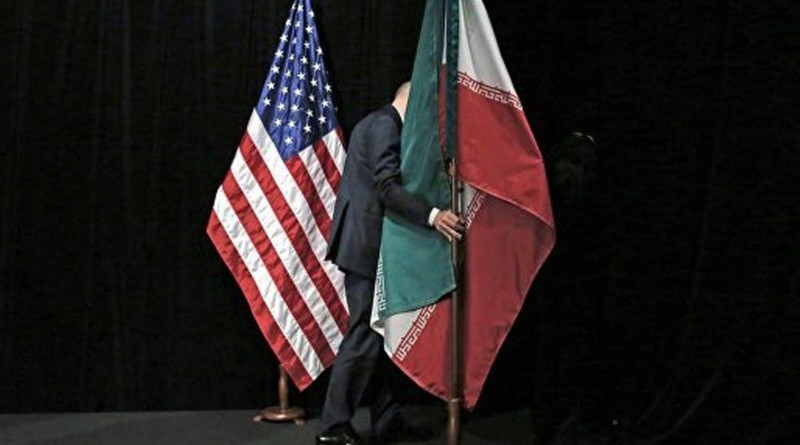
By Jacob R. Swartz
Since its establishment in 1979, the Islamic Republic of Iran has become the third-largest;threat;to United States national security. It may therefore seem like the ideal strategy to combat this threat would be one that is confrontational and aggressive.;However, this approach has proven largely ineffective. The truth is that hawkish policies stressing interventionism only escalates tensions with adversarial foreign powers. Moreover, such actions;tarnish;America’s international image. While we should treat Iran with caution, military action—whether by congressional declaration of war or executive decree—would be futile and counterproductive.
Firstly, military intervention tends to breed resentment within local populations. Secondly, regime-change wars often create power vacuums and reduce living conditions. For example, the;US intervention in Libya;under Barack Obama led to the;collapse of institutions, paving the way for anarchy, gang rule, and black markets, such as Libya’s contemporary “slave exchange.”
While Iran undoubtedly poses a threat to international stability, this threat would be more effectively addressed by adopting a doctrine of entente—a strategy focused on trade, neutrality, and the reduction of power imbalances—rather than war. Reinstating the nuclear deal is critical in this context, as it would mitigate hostilities, promote stability, and foster cooperation rather than conflict.
From the late 1800s through much of the twentieth century, Iran stood as one of America’s most steadfast allies in the Middle East. However, a pivotal moment in this relationship occurred in 1953 when the democratically elected Prime Minister Mohammad Mosaddegh was;overthrown;in a coup d’état orchestrated by the Central Intelligence Agency and MI6. The motivation behind this coup stemmed from Mosaddegh’s perceived lack of staunch anticommunism; both Winston Churchill and Dwight D. Eisenhower feared that his moderate stance would facilitate the pro-Soviet Tudeh Party’s access to political power. Additionally, Mosaddegh initiated the;nationalization;of Persian oil, which included reserves belonging to the Anglo-Iranian Oil Company—the largest private corporation in the British Empire. In response to these actions, the US and the United Kingdom orchestrated Mosaddegh’s removal and installed Shah Mohammed Reza Pahlavi in his place.
Fast forward to 1979, when anti-Western revolutionaries;deposed the shah;and established the so-called Islamic Republic, taking a number of;US hostages;in the process. This marked the beginning of a tumultuous and often-hostile relationship between the US and Iran. Since 1979, the US has imposed a series of;sanctions on Iran, beginning with Executive Order 12170—which froze an estimated $1.02 billion in Persian assets—followed by an embargo on Persian imports a year later and, finally, a comprehensive ban on all trade in 1957.
A significant shift occurred in 2015 with the signing of the Joint Comprehensive Plan of Action (JCPOA), which saw the US start to lift some of these sanctions. However, this reprieve was short-lived. Upon assuming office in 2017, President Donald Trump;reinstated;most of these sanctions. Trump’s tenure was marked by harsh language and rhetoric toward Iran, which reignited certain hostilities that President Obama had previously tempered. Tensions reached a new peak in January 2020 when Trump ordered the;extrajudicial assassination;of General Qasem Soleimani, an action that drew;severe ire;from the Iranian government.
Despite these stringent measures, US sanctions have fallen short of their objective, having done nothing to curb Iranian expansion. Furthermore, Trump’s administration threatened to;impose sanctions;on countries that engaged in commerce with Iran. Given that the economic benefits of trading with the US outweigh those of trading with Iran, most nations complied with Washington’s demands,;significantly hampering;Iran’s ability to export oil.
Public opinion of Americans is higher in Iran than the average Islamic nation. It is the;US government, not the American people, that Iranians distrust. This wariness stems from decades of crippling sanctions and US intervention near Persia’s sphere of influence. Amplified sanctions would only serve to further damage this improving public opinion, thereby diminishing any prospects for peace in the foreseeable future. Regrettably, this has been the same exact approach of the Biden administration.
Iran’s perceived threat to American interests in the Middle East could be significantly mitigated if the US were to lift sanctions and open trade. Currently, the US and UK are Iran’s only major Western adversaries. In contrast, Iran maintains robust trade relations with the European Union. Iran ranks as Europe’s seventh-largest exporter of crude oil.;Germany, in particular, has cultivated strong economic ties with Iran, with exports to Iran increasing by nearly 30 percent from 2015 to 2016 alone. This underscores Iran’s willingness to engage in commerce with the West.
The United Arab Emirates is one of America’s closest partners in the Middle East. However, from 2020 to 2021, the UAE emerged as Iran’s;principal trading partner;in the region. This development may have long-term negative implications, especially as the US continues to scale back its presence in the Middle East. A reduced diplomatic presence coupled with continued sanctions could see Iran sway the UAE to its side. Similar instances could unfold among the European countries previously mentioned.
Iran’s pursuit of economic expansion is precisely what US sanctions aim to stifle. The limited avenues for growth have driven Iran to seek alternative trading partners like Russia and China. Thus, the current US strategy appears counterproductive, as it pushes Iran further into the arms of;rival powers.
Since the mid-1990s, Russia has been one of the largest foreign investors in the Persian capital and has played a;pivotal role;in aiding Iran’s development of nuclear weapons, something that would confer a strategic advantage upon both nations. The US, in its efforts to further isolate Iran, risks inadvertently fortifying this partnership. For instance, on May 8, 2019, Iran’s newly retired Minister of Foreign Affairs Mohammad Javad Zarif;convened;with Russian Foreign Minister Sergey Lavrov in Moscow, where they discussed American sanctions and the threat of Western aggression.
More recently, as efforts to revive the nuclear deal have intensified, Iran’s counterproposals have garnered the support of both China and Russia. When formal negotiations;recommenced;on November 29, 2021, Vladimir Putin positioned himself as a close ally of Iran’s then newly elected President Ebrahim Raisi, who was;recently killed;in a helicopter crash in May. Recent strategic maneuverings by the Kremlin indicate further efforts to secure Iran’s allegiance.
Rather than isolating Iran, sanctions inadvertently bolster Russia’s power. If the US were to lift these sanctions, open trade, and reestablish diplomatic relations, Iran may view the US as less of a threat and come to recognize that the benefits of fostering a friendship with the US outweigh those of an alliance with Russia.
Additionally, tensions could be reduced if the US were to scale back its support of Saudi Arabia, Iran’s principal rival. Following the outbreak of the Yemeni civil war in 2015, President Obama offered;substantial assistance;to Saudi Arabia, including intelligence and access to American refueling stations, extended in response to Crown Prince Mohammed bin Salman’s;pledge to assist;Saudi-aligned Presidential Leadership Council forces against the Iran-backed Houthi rebels.
Despite facing;bipartisan opposition, President Trump continued this strategy, notably;vetoing a bill;that sought to terminate aid to Saudi Arabia entirely. If the Biden administration were to reassess this stance and limit this partnership to be strictly commercial, or even adopt a neutral position, the US would be perceived as less of a threat to Iranian interests.
Until the JCPOA was signed in 2015, Iran was on a determined path toward developing nuclear weapons. For decades, prospects of Iranian nuclearization have directed both the US and Israel to maintain a hawkish stance, suggesting that a nuclearized Iran poses an existential threat to global stability. Nevertheless, a;different perspective;suggests that if Iran were conditionally permitted to maintain a limited nuclear arsenal under a freshly negotiated agreement, it would make the region more stable. This would serve as both a compromise and a measure for Iran’s own national security.
Contrary to what Western propaganda tells us, the driving factor for nuclear proliferation in developing nations is to discourage invasion,;not;to incite warfare. While not ideal, the unfortunate reality is that denuclearization often makes a country vulnerable to invasion. Had Muammar Gaddafi not;relinquished Libya’s arsenal;eight years earlier, the North Atlantic Treaty Organization would have likely taken a diplomatic approach in resolving the 2011 crisis. Likewise, had Ukraine not;surrendered its cache;in the 1990s, there probably wouldn’t have been a Russian invasion. For better or worse, nuclear weapons are, above all, deterrents.
Though not a formally declared nuclear power, Israel is the only Middle Eastern country to possess a nuclear arsenal, which makes it Iran’s most formidable threat. When;Nation A;holds the power to;obliterate Nation B;without reciprocal capability, it makes for a less-stable world. Therefore, the logical conclusion would be that a nuclearized Iran would mitigate power disparities in the Middle East, creating a mutual deterrent.
However, while permitting Iran to possess nukes might create a balance of power in the region, it;doesn’t guarantee;that they wouldn’t be used. Should a reckless Iranian leadership launch a nuclear strike on Tel Aviv, Israel would surely respond with equivalent force. Moreover, there’s no assurance that Iran would ever accept diplomatic overtures from the US. The US State Department;identifies Iran;as the world’s leading state sponsor of terrorism. Were Iran to become a nuclear power, the possibility of nuclear weapons ending up in the hands of terrorists might increase.
Although Iran presents a geopolitical challenge in the Middle East, aggression is bound to exacerbate regional instability, which would not benefit the world. From a strategic standpoint, the US would gain more from adopting a doctrine of entente. Intervention is not a suitable method for addressing the threat posed by Iran but would, in fact, be evidence of the failure of the US to do just that.
- About the author: Jacob Swartz is a writer and independent content creator based out of the Washington D.C. area. An apprentice with the Mises Institute, Swartz was a 2023 Ron Paul Scholar, and holds a bachelors in English, economics, and political science from George Mason University. In addition to his involvement with MI, he runs “The Politicrat” YouTube channel, where he conducts interviews and produces long form video content. He has also made appearances on programs such as “The JBurden Podcast” and “The Pete Quinones Show”, and has written for the “Old Glory Club” Substack.
- Source: This article was published by the Mises Institute
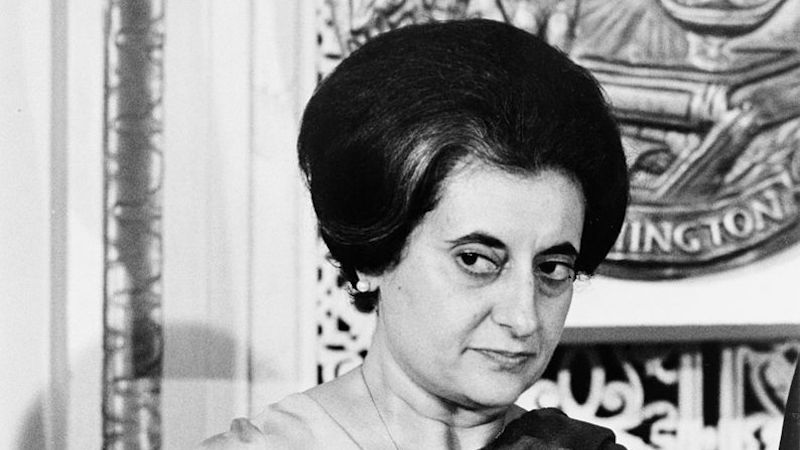
June 25, 1975. When brute power suspended civil liberties, censorship laws were slapped on the media & dissent quashed!
On 25th June, 1975, the government of India led by the then Prime Minister Indira Gandhi imposed a state of ‘Emergency’, in the country. Seen as the ‘darkest hour of India’s democracy’,; Manoranjana Gupta recalls incidents from this tumultuous time when civil liberties were suspended, all opposition leaders were taken into custody, her own father who was a leading journalist faced arrest, major media houses in the country were forced to bow down to draconian censorship norms, and the foreign press was forced to make a dishonorable exit.
This article by me recapitulates the darkest period in the history of ‘Modern India’ in the post-Independence era. June 25,1975 is a day recorded in our history for being the worst impingement on fundamental rights of citizens and also the most draconian pre-censorship norms ever imposed on the press.;
Each day this year, for the last fifty years, India recalls the horrors of how the democratic fabric of the country was destroyed and how dissent was quelled.;
On this day in 1975, then Prime Minister Indira Gandhi declared a state of Emergency in the country. This Emergency ended 21 months later, on March 21, 1977. It was an example of how absolute power corrupts absolutely. Indira Gandhi, a Prime Minister who encouraged adoption of the slogan “Indira is India and India is Indira”, and driven by personal political vendetta, pushed the nation into a quagmire of Emergency, stripping ordinary Indians of their fundamental rights.
Political vendetta and brute force;
The Emergency proclamation made by President Fakhruddin Ali Ahmed drew on Article 352 of the Constitution to declare a state of ‘internal emergency’ on grounds that “the security of India is threatened by internal disturbance”. Between June 26, 1975 and March 21, 1977, when the Emergency was in force, the government assumed draconian powers and crushed all dissent. On the eve of Emergency imposition, police swooped down and arrested all major Opposition leaders, including Jaiprakash Narayan. Civil liberties were suspended, media censored, and amendments were brought that threatened to alter the basic character of the Constitution. Draconian laws like MISA were strengthened. The government even suspended the right to move court for enforcement of Fundamental Rights.
NBC interview that precipitated action against foreign press
My first recollection of Emergency was the interview that the leading American TV channel National Broadcasting Corporation (NBC) did with my father KN Gupta, who was then a seasoned journalist in his mid-forties working with the right wing daily newspaper ‘The Motherland’. As a young nine-year old whose father was a swayamsevak (a volunteer for the Rashtriya Swayamsevak Sangh) and who worked in the only ‘extreme right’ daily publication, our house was frequented by senior journalists and RSS persons. I already knew a lot about what was going on. The neighborhood of the journalist colony Gulmohar Park where we lived was abuzz with incidents of how senior journalists like my father’s Editor-boss KR Malkani had been arrested apart from many others and whispers of how my father and many other senior journalists too were likely to be arrested. I had understood that after the sudden closure of The Motherland, my father did not have a job and a salary and my mother who was a teacher was worried about how she as the only bread earner would keep the household expenses going. Days before financial penury forced us to leave the comfort of our own three-storeyed house and move to a tiny two-room apartment in the neighborhood, my father called us all out to meet the NBC news team saying they were going to interview all of us about the situation in the country and whether we understood the implications of what was happening.
Even today, I can well recall the NBC journalist setting up his camera at one end of the dining table in our house and interviewing the whole family by turn. I heard my mother describe her fear of an impending arrest of my father and how she had heard of arrested journalists being tortured in custody. My mother spoke of the financial crisis at home and how she was finding it difficult to make ends meet. My two siblings and I were also interviewed and we repeated what we had been hearing about the editorial pages of newspapers going blank to protest against the censorship that had been imposed. We spoke about the unrest at home of having to pack from our own lovely home and move to live in a small rented apartment.;
Why was Emergency imposed ?
It all began after a judgment of the Allahabad High Court held Indira Gandhi guilty of electoral malpractices. She had won from the constituency of Rae Bareli, defeating her closest rival, Raj Narain, by more than one lakh votes. A long list of allegations was raised by Narain against Gandhi after his defeat, most of which were turned down by the High Court. There were two crucial findings, however, that dealt a serious blow to Gandhi’s defense; she had made use of government machinery to set up a stage and loudspeakers during her campaign, and used a gazetted officer as an election agent, both of which amounted to a violation of Section 123 (7) of the Representation of People’s Act, 1951. The judgment was delivered by a single bench consisting of Justice Jagmohan Lal Sinha. Upon Gandhi’s appeal, the apex court granted an exceptional stay on the judgment as the Supreme Court was on vacation. Gandhi grabbed this opportunity and the-then President Fakkuridin Ali Ahmad declared a state of Emergency on the grounds of internal disturbances. And so began a grim period of 21 months that saw opposition leaders indiscriminately jailed without evidence of wrongdoing, the press muzzled, and a gradual but committed attempt to hijack India’s democratic institutions in favor of an authoritarian rule. The democratic backsliding that began under; Prime Minister Nehru with the 1st Constitutional Amendment Act had now assumed a momentum unseen in the history of post-independence India, courtesy his daughter.;
Indira filled up prisons with her critics, sparing none;
Indira did not spare anyone. She went after her critics – the opposition, and the press. As India’s prisons filled up with the faces of those who opposed Gandhi’s unsubstantiated and wholly mala fide declaration of Emergency, the hot and loud printing presses of India’s young but thriving print news industry slowly grew cold and silent. There was one individual whom Indira Gandhi had always seen with apprehension – Nanaji Deshmukh of the RSS. She called him the “Chanakya” of their time. Perhaps, his strategic acumen was what she feared the most, as most of the earliest faces that found themselves behind bars were, in fact, his followers. Deshmukh’s decision to join hands with Jayaprakash Narayan may have compelled Gandhi to crack down mercilessly on her opposition. Her paranoia about an alleged conspiracy led by George Fernandes to assassinate her in the wake of the nationwide railway workers strike in May 1974 may have been another motivator. She sent the police after him too, but he escaped from his home right as they arrived, making a getaway in nothing but his lungi. Gandhi was determined to capture him and had his brothers, Lawrence and Michael, imprisoned and tortured, hoping they would buckle and reveal his whereabouts. Even one of George’s closest associates, the talented actress Snehalatha Reddy, was imprisoned and questioned. Sadly, she passed away while in prison, because of the brutal treatment she was subjected to by the police.;
Police began a crusade against the Press
Within two days of the declaration of Emergency, many newspapers went out of circulation. There was a state of paranoia and confusion about the clampdown. Publications that were fortunate enough not to attract police raids were now desperate to understand what was happening, and whether, or when, they would be next. This was when Indira Gandhi stepped out of the shadows with some newly-framed “guidelines” for the press. The first one demanded the press to self-censor any news that could be deemed “plainly dangerous”. The newspapers were obligated to assist the Chief Press Advisor by self suppressing news of this kind. What constituted information that could be deemed “plainly dangerous” was far from well-defined, leaving the authorities the room to stretch this restriction as thin as they liked, effectively curbing any piece of news that Gandhi might disapprove of. When papers were in doubt about whether a string of text was “plainly dangerous,” they were asked to contact the nearest press advisor. This reliance upon press advisors essentially materialized into a relationship wherein all newspapers across the country eventually needed the press advisor’s permission to publish just about every piece in their papers, whether or not the publishers had any concerns about their potential to be hit by considerations of being “plainly dangerous.” This so-called Chief Press Advisor was an institution created following the Emergency and solely served the purpose of censoring the news.;
More than 7,000 journalists and media personnel thrown behind bars
Over the next 21 months, more than 7,000 journalists and media personnel were thrown behind bars. This is the figure provided by the Ministry of Home Affairs in May 1976, and the actual numbers could have been much higher.; By September, more than 40,000 RSS activists had been imprisoned, and the ones that walked free had decided that it was time to retreat. More than 80 RSS activists had died in custody, and the ones that roamed free, staunchly opposing the Emergency, did not want to have any more deaths on their conscience. Dr. G.G. Parikh, in his memoir, has described how RSS activists in Yerawada Central Prison had written to Gandhi, promising to steer clear of political activism. The fear of arrest and imprisonment was a powerful tool for Gandhi, incapacitating not just those who were already shackled, but even those who were fortunate enough to walk free during Gandhi’s autocratic episode.;
When it came to the press, however, the fear of arrest and imprisonment didn’t have quite the same effect. While it allowed Gandhi to force the surviving newspapers to make sure that any words they published criticizing Gandhi’s actions were docile and tame, it didn’t work all the time. Some papers like the Indian Express and The Statesman continued operating in compliance with the new press guidelines but would leave their editorial pages blank as a protest, which, fortunately for them, did not attract Gandhi’s interest, as long as the rest of their pages did not have anything objectionable to say about her modus operandi, the actions she took during the Emergency, or the imposition of the state of emergency itself. But not everyone listened, and not everyone caved in.;
None could speak ill of ‘Her Majesty’
While many papers were locked up almost overnight after the Emergency was declared, others evaded closure despite refusing to submit to Gandhi’s “guidelines”. While these “guidelines” were enforced with the might of the state machinery, including the police and the newly-established Chief Press Advisor in an attempt to muzzle and leash the press, some papers were simply too stubborn and were not going to just raise their arms and surrender. The Motherland was in the service of the nation and had no interest in a tame existence where it was denied its right to speak the truth to its readers. However, Gandhi was stern, and the moral resilience of journalists would eventually be defeated by a determined state police that was sifting through every inch of the city to trace rogue press that were still speaking ill of ‘Her Majesty’. Late in the evening of; 26th June, 1975, less than two days after Emergency was imposed, the premises of The Motherland were raided by the police. ;
Impact of NBC interview and ouster of foreign media;
As soon as the NBC interview of my father was televised in the US, it started having repercussions. The interview showed the blatant and heinous manner in which rights of the common man had been usurped, how media and journalists had been muzzled, and foreign press had been ousted to ensure that the brutal force with which this was being carried out did not leak to the world outside. The interview had a cascading effect on channels across Europe which picked up the story and it was; the Indian Ambassador in the US who brought it to the notice of New Delhi. The then I & B Minister V. C. Shukla was furious and he directed foreign correspondents either to succumb to pre-censorship or leave the country. My father was also put under great pressure and threatened with arrest for having spoken on camera.;
Mark Tully said BBC refused to sign ‘censorship agreement’
Last year, around the same time, I was penning an article for one of the Indian magazines and decided to call eminent journalist and political commentator who represented the BBC for several decades in India, Mark Tully. In a telephonic interview, Mark Tully described how he was given 24 hours to leave the country after the organization refused to sign a ‘Censorship Agreement’. Tully headed the BBC then and was much respected for the independent news stories that they often filed. Indira Gandhi ensured that Tully was given marching orders by Shukla and had to leave India, but he asserts that it was better for him because by then he already knew the facts and it was easier for him to write from his own country, without fear or prejudice. Tully told me that a majority of the foreign press left the country barring one or two who agreed to toe the censorship norms. He described at length the plight of the Indian media and the torture of news censorship that they were being subjected to.
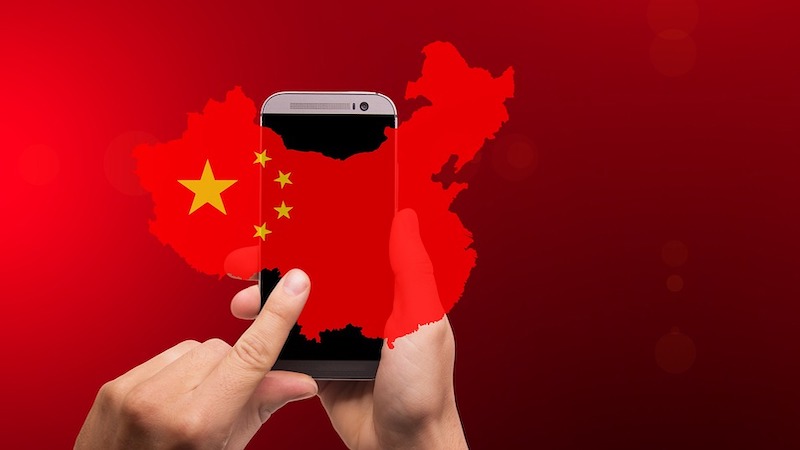
By Jiannan Luo
In late April 2024, a man committed suicide after allegedly being swindled by his girlfriend, igniting gender tensions on the Chinese internet. Millions of online comments defended the man, known as ‘Fat Cat’, and attacked the girlfriend — discourse that quickly grew into generalised criticism of all women, accusing them of having a ‘money-worshiping’ mentality and squeezing men out of the dating market.
On 19 May 2024, the Chongqing Public Security Bureau;issued a statement;clearing the girlfriend of any responsibility. Official media outlets such as;the;People’s Daily and China National Radio weighed in, calling for rationality and condemning rumours and cyber violence against the girlfriend.
The official statement did not end the controversy. Some pro-government ‘patriotic bloggers’ became divided, with some supporting the official government stance, viewing further conflict as malicious, while others believed that official media supporting the woman’s innocence;was;infiltrated by ‘extreme feminists’ and accused them of ‘ignoring public opinion’.
Gender issues have long been contentious in China. The interplay of economic pressure and a long-standing patriarchal culture has fostered a strong conservative stance on gender issues, particularly among so-called incels. China’s anti-feminists often advocate for marriage based on ‘traditional morality’ and oppose feminist campaigns, often referred to as ‘feminist fists’ — a pun in Chinese where ‘rights’ and ‘fists’ are homophones — implying that feminists are extremists.
Anti-feminist rhetoric is unique in that it often opposes state-backed institutions on gender issues, including media outlets, police, local governments and state-supported organisations like the All-China Women’s Federation. A 2021 amendment to China’s Civil Code that introduced a 30-day;cooling-off period;for divorce was criticised by feminists, while the same law’s provision not to accept lawsuits solely based on ‘marital fidelity’ was also criticised by anti-feminists fearing it might condone female infidelity.
Some analysts suggest that some propaganda institutions have;utilised gender conflicts;to their advantage, responding to feminists and anti-feminists by both emphasising gender equality and hinting that feminist movements disrupt social stability. But the ‘Fat Cat’ incident demonstrates that many official media outlets often play a reactive role and are vulnerable to criticism by anti-feminist voices. While the Chinese government can usually mobilise public support on diplomatic and economic issues, it struggles to do so on gender issues.
The usual tactic of restricting comments to control public opinion can also be ineffective due to the overwhelming volume of anti-feminist comments. During the ‘Fat Cat’ incident, when Weibo restricted and monitored the spread of the topic, the ‘suppressed trending searches on Fat Cat’ became a hot topic.
Similar to Confucianism’s intertwining of patriarchy and dynastic loyalty, patriarchal rhetoric in modern China closely aligns with patriotic sentiment. Critiques of the government often target specific institutions rather than the state itself, such as the Chongqing police during the ‘Fat Cat’ incident. As there is no critique of the state, these opinions are rarely suppressed by the government.;
But patriotism is also becoming a tool for feminists, who accuse their opponents of receiving support from ‘foreign forces’ and thereby protect themselves from being suppressed.
At present state discourse and policies do support women’s rights. The;All-China Women’s Federation;is a ministerial-level public institution and the proportion of female representatives in the National People’s Congress has steadily increased to over 26 per cent. President Xi Jinping frequently addresses women’s employment discrimination and the importance of welfare system guarantees.
But Beijing’s efforts to improve women’s rights often focus on formal discourse or institutional principles rather than implementation, and avoid discussing gender tensions in public discourse. Its understanding of gender equality itself is limited, demonstrated by attempts to link women’s rights with ‘family harmony’ and ‘reproductive support’. This leads to a disconnect between the problems the state believes it needs to solve and the actual problems women face, resulting in inaction or denial of gender issues. Official media framed the ‘Fat Cat’ incident as cyberbullying against an individual woman, avoiding the underlying gendered dimension.
Due to the state’s inaction, many institutions are becoming more susceptible to anti-feminism. In 2019, the Beijing Evening News criticised public opinions that ‘insult women’. By 2022, it had shifted to denouncing what it called ‘rampant feminist extremism’.;
The Weibo account of the Central Committee of the Communist Youth League, closely aligned with conservative rhetoric, asserted in early 2019 that ‘demanding men and women to adhere to the same high standards in every aspect of society, without regard to facts and logic, is not advocating for women’s rights but creating another form of absurdity and inequality’. In 2022, it;further stirred controversy;by declaring that ‘extreme feminism has become a malignant presence on the internet’.
The Chinese state, at least nominally, aims for gender equality, but its policies haven’t addressed underlying gender tensions. As these tensions escalate, institutions caught between policymakers and the public struggle to take a consistent stance. When they lean towards gender equality, they face backlash from anti-feminist forces. And even when these institutions promote gender equality, they often navigate between state rhetoric and patriarchal views, rather than supporting marginalised feminists labelled ‘unpatriotic’.
While there’s currently little indication of Chinese policymakers changing their stance on gender issues or reforming gender policies, feminists are increasingly utilising patriotic rhetoric to compete with anti-feminist forces. This strategy may enable them to garner greater support from those institutions caught in the middle.
- About the author: Jiannan Luo is a doctoral research student in the School of Government and International Affairs at Durham University.
- Source: This article was published by East Asia Forum

